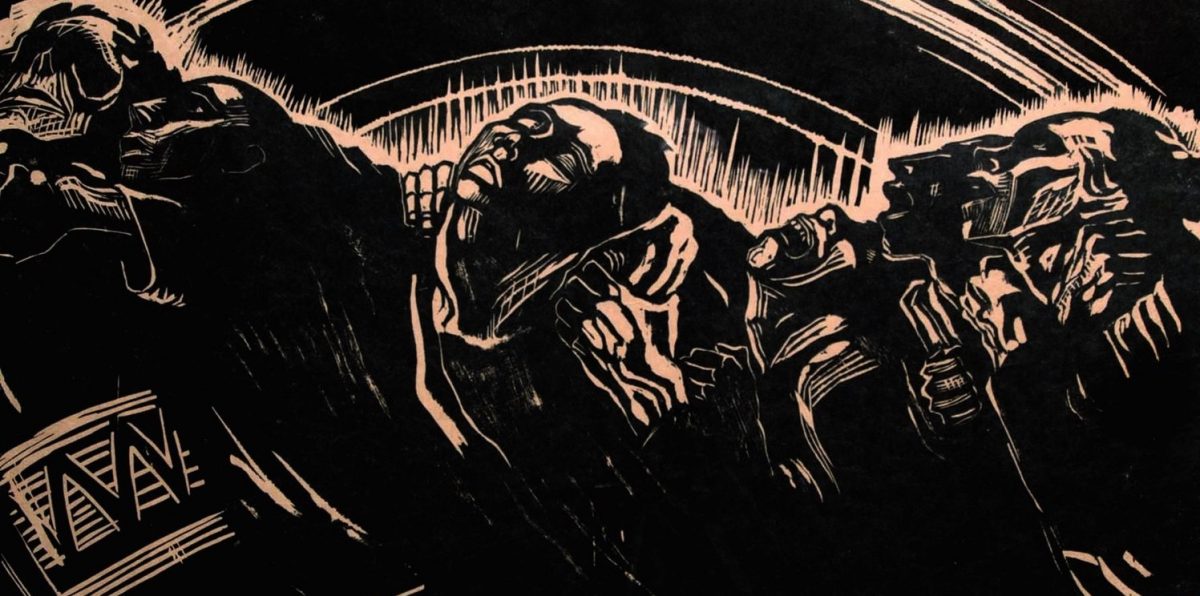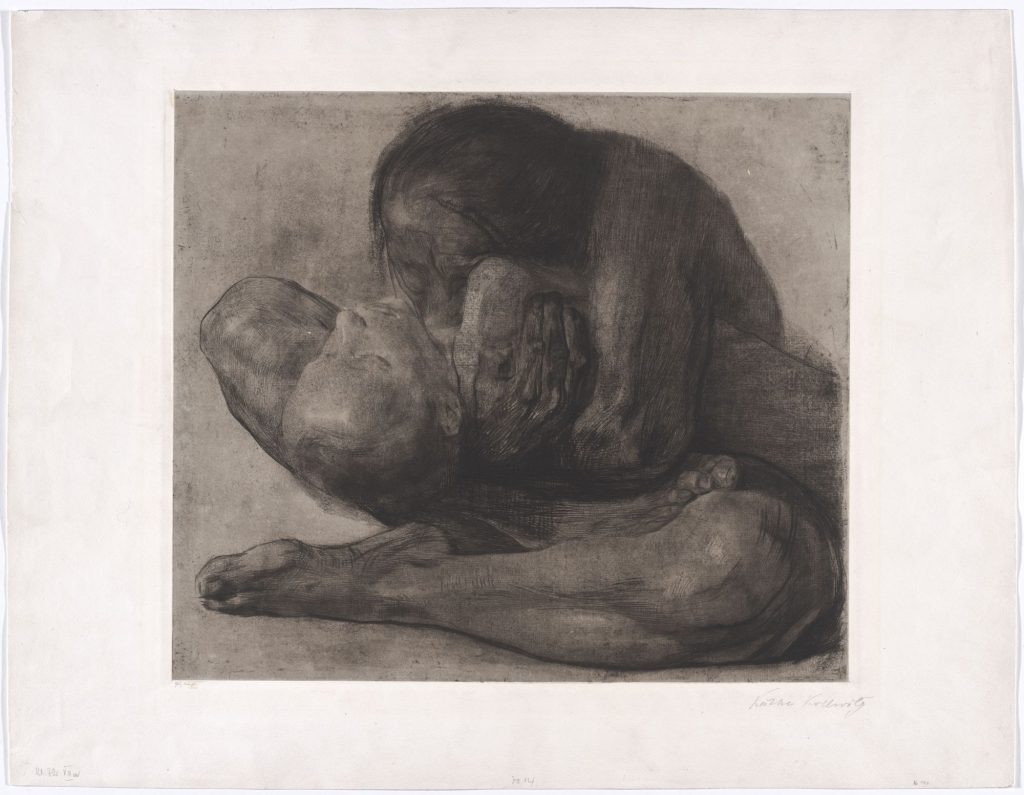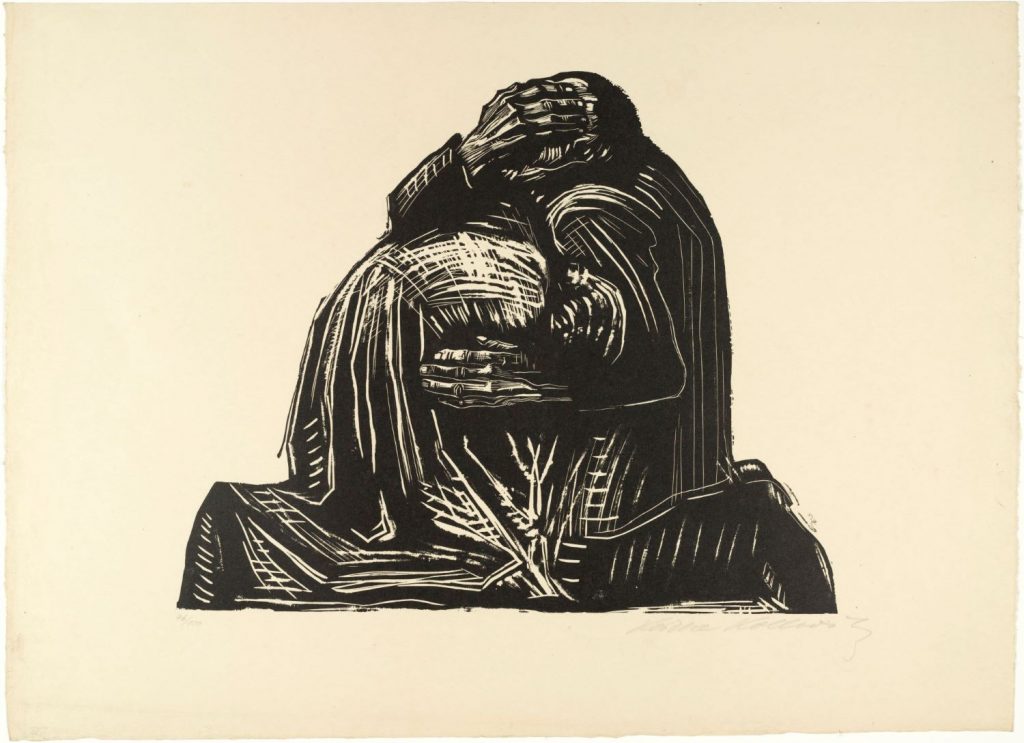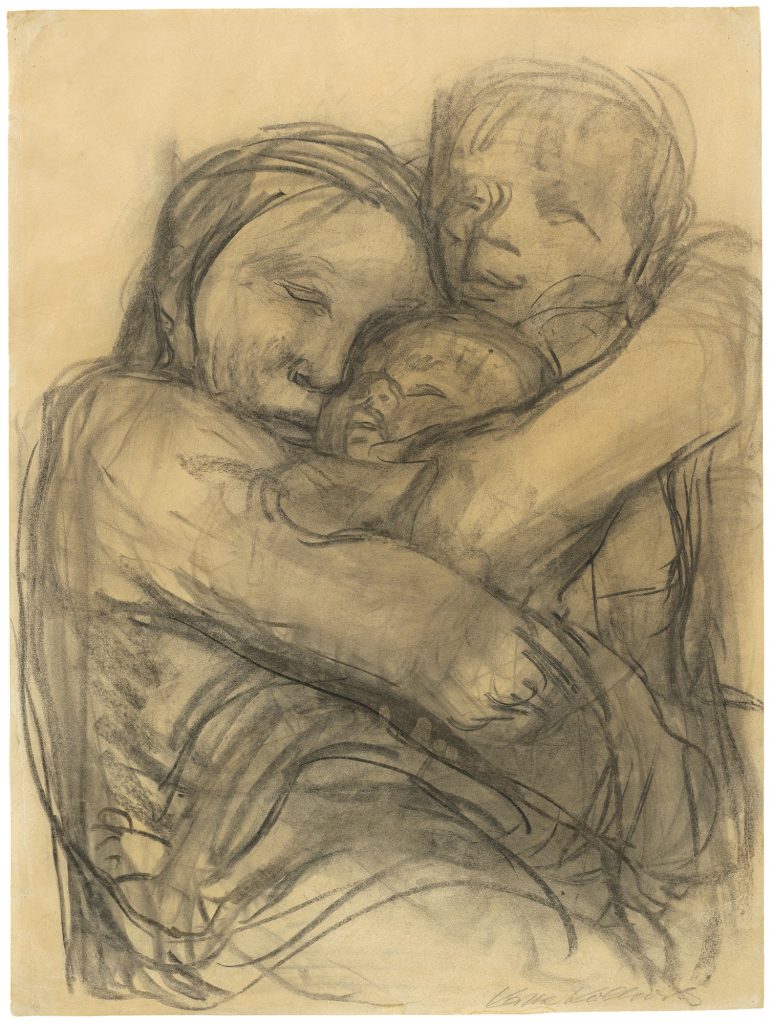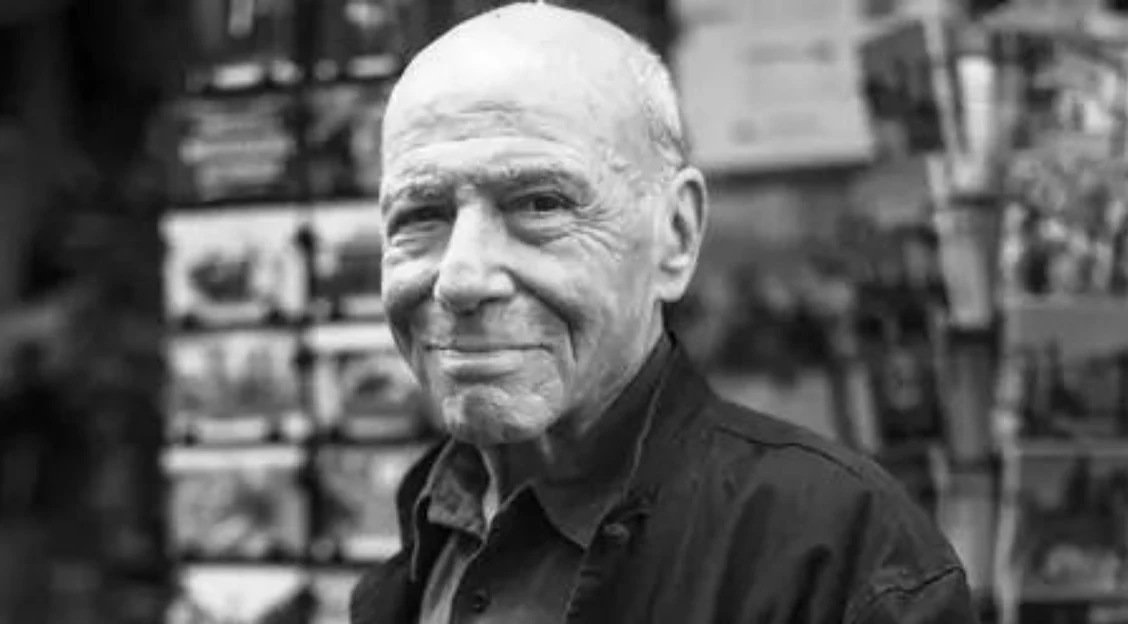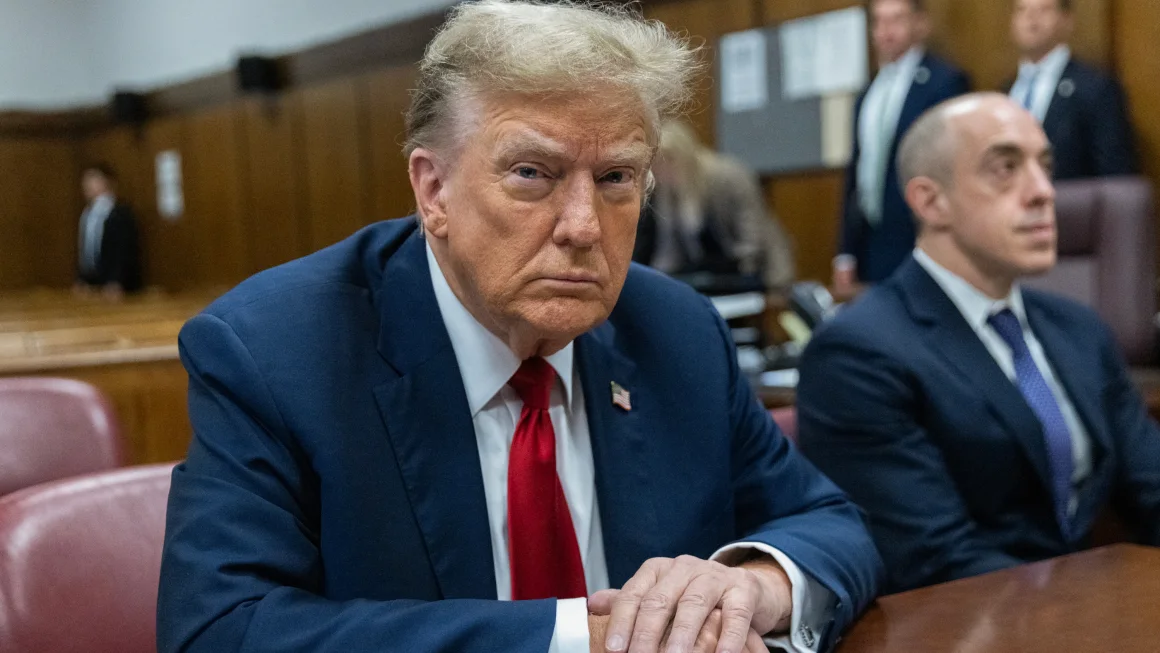On 30 May, around cocktail time, a jury in New York criminal court found former president and Republican candidate Donald Trump guilty on all thirty-four counts of falsifying business records to cover up a payoff for Stormy Daniels’ silence in the run-up to the 2016 election. Throughout the five-week trial (on state, not federal, charges), Trump had been crafting the story of its end: the proceedings, and now the verdict, are ‘a disgrace’, ‘rigged’, presided over by ‘a judge who was corrupt’, and all of it – every grand juror and trial juror and prosecution employee and court officer – worked by orders of the Biden Administration. On the legal front, Trump will appeal. On the financial front, the verdict has been a boon, raising $52.8 million for the candidate in twenty-four hours. On the political front, CBS News immediately reported that his campaign vowed to launch ‘a grievance war across the country’.
The grievance war has been ginning up for some time. Every day, many times a day, for years, the campaign, the Republican Party and its sound machine have been broadcasting a twin message of alarm: the law is against us; the law is us. Contradiction is the point. Fear is the operative instrument: while the ‘very innocent man’ suffers, crime stalks every citizen. Immigrants and terrorists flood the country from foreign prisons and mental institutions, raping women, stealing jobs from citizens, driving down their wages, destroying their communities. The country is ‘a mess’, government broken and venal. Law and order lie prostrate, police handcuffed by the woke mob. It’s ‘American carnage’ redux, as bloodletting around the world and ‘Jihad Joe’ represent US impotence or worse – and all of this while January 6 patriots languish in federal prison. ‘Remember, it’s not me they’re after’, Trump’s campaign messages wail, ‘THEY’RE AFTER YOU – I’M JUST STANDING IN THEIR WAY!’
Hence, his mugshot is an election poster; his past, recent and pending trials both persecution and campaign platform. Hence, he promises a cleansing fire:
Patriot, when we win, we’ll have the LARGEST deportation operation in HISTORY!
We will root out the communists, Marxists, fascists and the radical left thugs that live like vermin within the confines of our country.
Today’s victim of a witch hunt is tomorrow’s Grand Inquisitor. Judge Arthur Engoron, who in a civil case in February found Trump, his company, his two sons, the company’s former CEO and former controller guilty of sprawling financial fraud, is ‘whacked out’. Everyone in real estate lies and defrauds insurance companies, banks and assessors, the Trump team claimed; it’s just business. The political strategy has been to inflame emotions: a most instrumental moral panic. The cultural strategy has been to make impunity acceptable, worthy of but a shrug.
Except when it’s not. By Trumpist calculus, when Michael Cohen lied and falsified records as an attorney for the Trump Organization it was just business; when he testified about the Stormy Daniels scheme as a coordinated effort to kill a sex story in order to influence the election, he was a rogue liar who should be sent back to prison for perjury. And so it goes … Trump as president had immunity and should not be tried for anything, ever (a claim the Supreme Court had to ponder and whose decision will come down this month). People who assaulted police and smashed the Capitol on January 6, 2021, are ‘political prisoners’ who should be pardoned; people who smashed storefronts in 2020 protesting police violence are ‘thugs’ who should have been shot. White nationalists who marched with tiki torches shouting ‘The Jews will not replace us’ in 2017 were ‘very fine people’; students who protest against Israel’s genocidal war on Gaza are antisemitic terrorists, so ‘I [would] throw them out of the country.’ Biden is a ‘tyrant’ who hates America; Trump, who will be a ‘dictator’, but ‘only on day one’, tells the faithful, ‘I will be your retribution’ and Make America …
Anyone not barraged by Trumpist emails may say, At least with Trump we get truth in advertising. Or, He doesn’t mean what he says. Or, We lived through one presidency; it wasn’t that bad. We got those pandemic checks. He can’t be worse on Israel. And can you believe the price of things? Those are familiar rejoinders these days. They reflect the power of forgetting. They also reveal the power of the right at the level of culture.
We have grown accustomed to the carnival barker, the conman. Just as we grew accustomed to torture and permanent war decades ago, and before that to the ideas that retribution is justice, that market values are human ones, that tax cuts benefit us all, that ‘the nine most terrifying words in the English language are “I’m from the government and I’m here to help”.’ Across the political spectrum, we accommodate the idea that some political views should be silenced. Meanwhile, the liberal sound machine’s gleeful disdain for Trump-the-person, its enthusiasm for prosecutors and national security services, arouse suspicion if not fury on the left. The Biden campaign’s apparent decision to contend for re-election as a bulwark against imperilled democracy is tone deaf. Americans have got used to cynicism; to being taken for a ride economically and politically (or taken into police custody); to ‘democracy’ as a sick joke.
Trump has had much to do with this, but he did not start it. To take but one relevant indicator, since the 1980s, the proportion of US adults with a criminal record has swelled. As the Brennan Center for Justice put it a few years ago, ‘if all arrested Americans were a nation, they would be the world’s 18th largest … Holding hands, [they] could circle the earth three times.’ It is inconceivable that Trump will be sentenced to prison on 11 July, but his story of victimization by the state, told so often and so loudly, can ring true for those habituated to the realities of Prison America. It is canon for those whose God promises vengeance but not much enjoyment. In the country’s long-running morality play of Good vs. Evil, the heroic victim returns as a cartoon of suffering and a back-slapping punisher.
*
The episodic drama of court appearances and appeals has given the lifelong grifter a priceless, if unconventional, stage to propound his version of reality and express contempt (sleeping at trial, insulting judge and jury) when anything interferes. It has done the same for Republican bootlickers, vice-presidential auditioners, assorted tough guys, the Speaker of the House and other lackeys and their entourages, who made the pilgrimage to Judge Juan Merchan’s courtroom and found receptive media crews outside. It has also obscured the right’s organizing at the level of law.
A formidable liberal mythology has surrounded the idea that The courts will save us. The right, meanwhile, regards the law, the Constitution, the courts, the electoral process, every other institution, as they are: areas of struggle, where nothing is permanent, and every loss is but a setback. Following the verdict, Trump thundered, ‘We will fight for the Constitution!’ No, he will fight for himself, the law being now convenient, now discardable, as opportunity dictates. This would be just another bit of Flimflam Americana except that it has been cultivated far more methodically than the theatrics suggest. When the now-convicted felon said the real verdict will be on Election Day, his statement was both true politically and a gesture to the right’s preparations for steering that verdict his way.
Earlier this spring we got a glimpse of these efforts. On 4 March, in the case Trump v. Anderson, the Supreme Court ruled that no state – unless, in some near-impossible future, Congress passes legislation – can disqualify an oath-breaking insurrectionist from seeking federal office under the 14th Amendment. It was a political rather than legal decision. The amendment’s language and history are plain. The Trumpists on the court, who typically crook the knee to the text, original intent and states’ rights, blithely disregarded their avowed tenets this time. Four days later, Trump loyalists replaced the leadership of the already grovelling Republican National Committee to concentrate on election finagling. The old party chair had committed an intolerable offense by sponsoring debates and asserting neutrality until voters had made their choice for the GOP presidential nominee. The new party chair, Michael Whatley, had begun lying about a rigged election before it was decided. Check. Once Trump lost, Whatley, then head of the North Carolina GOP, told radio listeners, ‘It really is kind of a scary proposition to think that you’re gonna have a court overturn some of those results. But that’s really the plan.’ Check. Ever since, and despite the Trump team losing more than sixty lawsuits challenging the 2020 results in six states, Whatley has held to the gospel. Consequently, insuring ‘election integrity’ is the ‘core mission’ of the RNC, along with raising money. Check and check.
Co-chairing the party is Trump’s daughter-in-law, Lara Trump, a former Fox News pundit. Her husband, Eric, a dedicated if dimwitted liar, was fined $4 million for his part in the civil fraud. His brother Don Jr. received the same sentence. Their father, never as rich as he claimed, strapped to cover his $355 million fine (plus interest) and given a break pending appeal, was cunning to have launched another family business. Daughter Ivanka’s husband, Jared Kushner, got $2 billion from the Saudis shortly after leaving his White House job. Lara herself, upon assuming her new job, spoke of using RNC funds to relieve her father-in-law’s legal costs: ‘I think that is a big interest to people. Absolutely. [Donors] feel like it’s an attack not just on Donald Trump but on this country.’
By 12 March, the new party leadership had lawyered up to ‘initiate battle on election integrity from an offensive instead of defensive posture’. That was Chris LaCivita, co-manager of the Trump campaign and the RNC’s chief of staff. Joining him, as chief counsel, is Charlie Spies, an old GOP hand who applauds the boost that his field of election law got after the Supreme Court decided the presidential election of 2000. Next up, as senior counsel for election integrity, is Christina Bobb, a media hack, sometime lawyer for Trump, unindicted election meddler and the author of Stealing Your Vote: The Inside Story of the 2020 Election and What It Means for 2024. Outside counsel for election integrity is Bill McGinley, who as counsel to the Republican convention’s rules committee in 2012 engineered the disqualification of some delegates for Ron Paul to benefit Mitt Romney – shocking Paul’s supporters, libertarians mostly new to politics, who had imagined themselves helping to shape the party’s direction and instead protested outside the hall, ‘Where’s democracy?’
The leadership shuffle aligns the party apparatus with an ongoing Trumpist effort that has been building an army of trained poll watchers, poll workers, election clerks, and legal backup in strategic majority-Democrat precincts to challenge voters at the polls, intervene to block vote counts and generally create enough chaos to win outright or send the decision to courts or state legislatures. As early as 2021 the RNC’s election integrity director for Michigan said at a recorded training session for poll workers, ‘We’re going to have more lawyers than we’ve ever recruited, because let’s be honest, that’s where it’s going to be fought, right?’ As reported by Politico, recruits are cautioned that it’s illegal to try to disqualify every likely Democratic voter. But disqualification is the reason they are being trained.
Now the party aggressively promotes Trump’s pitch to black and Hispanic voters – colour has signified ‘likely Democratic voters’ since the mid 1960s – and headlines announce rising enthusiasm for the MAGA brand among them. But ‘the vibe’, as Trump’s appeal has been described, might fade, the voters tire. Law is more reliable, so GOP state legislators have been busily working to dilute black voting strength through redistricting. The party’s lawyers are also challenging various state rules that make voting easier. If history is a guide, Republican poll challengers will not be massed in majority-white districts.
*
‘I am a Political Prisoner’, Trump now begins his pleas for love and money. The quest for love has been a regular feature of Trump campaign missives, the baby voice – ‘please, pretty please’, don’t desert me, say you’ll vote for me, tell me now, ‘before I go to bed’ – alternating with a let’s-get-ready-to-rumble yell: ‘It’s time for me and you to shove it back in their corrupt faces!’
Two years ago, my Inbox rang with fears for ‘the children!’ Tykes were being taught porno, forced into story time with drag queens, urged to turn trans, to hate themselves if white and to rule the roost if black. School libraries had to be purged, curricula gutted, teachers struck off as mind-twisting perverts who’d brought litter boxes into the classroom for kids who ‘identify as cats’. As with previous hysterias over the imperilled child, words didn’t need to be true, only effective for energizing a political base. The mania translated into laws rewarding that base, placed rivals on the defensive, and helped win or hold elective seats for pursuing a broader agenda from school board on up. Liberals have decried ‘Hate’, but however much real pain the manipulators of moral panic cause, they are driven more by tangible benefits than a sadistic frisson. By last June, Republican-controlled state legislatures had introduced 549 anti-trans bills. By year’s end, eighty-six had passed (LGBTQ fightback has been formidable). Then, as if by magic, the children were saved.
The culture war continues as a vehicle for GOP base-building, law-making and leadership training. Legislators have introduced 347 new anti-trans bills this year, of which forty passed. But sex-crazed maniacs destroying children ceased to trip the alarm in national messaging as 2023 wound down. Enter January 6 ‘hostages’, a brotherhood of lambs for liberty being ‘tortured’ by the legal system, like Trump, then on trial for fraud. A Supreme Court decision on a case challenging the federal obstruction statute used to prosecute hundreds (including Trump) for efforts to overturn the 2020 election will also come down this month. ‘Welcome to the end of democracy’, GOP foot soldiers at the Conservative Political Action Conference in February were greeted. ‘We are here to overthrow it completely. We didn’t get all the way there on January 6, but we will endeavour to get rid of it and replace it with this right here’, the speaker said, holding up a cross. Yet today, appeals for the prisoners come mostly from their wives.
Having reassured the most embarrassing elements of his coalition – religious fanatics, Proud Boy hoodlums, QAnon symps – Trump’s messaging moved on to focus almost exclusively on one heroic victim and one scourge. The jury’s verdict has upped the volume and the rhetoric, as Trump bellows, ‘The US is a fascist state’ while his campaign simultaneously offers Americans the invigorating prospect of mass round-ups, concentration camps and revenge against those who are ‘poisoning the blood of our country’.
Trump’s consigliere Stephen Miller, a practiced peddler of fear and evangelist for violent white grievance against immigrants, pushed Trump to decree an end to 14th Amendment guarantees of birth citizenship for the children of undocumented immigrants while he was in the White House. The idea sputtered, but Miller has said Trump 2.0 will revisit it. Meanwhile, Miller’s organization America First Legal has also been sending scare emails about threats to voters’ democratic rights. It has tied up courts in Arizona, challenging the state’s election administration procedures, claiming, in part, that they favour blacks and Hispanics at the expense of whites and Native Americans. Courts have thwarted Miller on some challenges, as they have the RNC in its effort to impinge on voting rights there, though lawsuits continue in Arizona as part of the right’s election interference offensive in pivotal states.
Other than pushing for a federal law imposing ID requirements on every voter, ostensibly to prevent Democrats from mobilizing ‘illegals’ and fraudsters to pick the president, Republicans recognize that precincts, cities, counties and states are where it’s at in presidential elections. The grift – diverting election funds to Trump’s legal defence – could result in a hollowing out of conventional ground-game organizing, though the spectre of Trump behind bars, avidly promoted by the man himself, has opened spigots of cash, so the party might recoup. After Trump’s conviction, Steve Bannon, Miller’s mentor, criticized the campaign, arguing that on ‘voter registration and ballot chasing, district by district’, on mailing ballots, election officials and lawsuits, ‘we have to be maniacally focused’.
*
All of this draws a contrast with the fantasyland of ‘national elections’ conjured by the Supreme Court in Trump v. Anderson, and to so much reverential talk (beyond the right) about the ‘rule of law’ since the jury’s verdict. I return to Anderson because, of the many legal actions that have favoured Trump, it resonates most with the reality that law, like the voting booth, is not a sacristy of pure principle but a gritty fight ring.
As Akhil Reed Amar and Vikram David Amar emphasized in an energetic amicus brief to the court, there is no true national election in the United States. There is a national popular vote, which does not mean the popular winner becomes president. (See 2000, 2016.) There is a national Election Day, which does not mean everyone votes in the same way all at once, since different states have different rules. The US Constitution sets out basic rules of eligibility – a presidential candidate must be a resident citizen, native-born and at least 35 – but it’s up to states to enforce those. As it’s up to each state to decide how it will run presidential elections, what is required for ballot access, what form the ballot will take, how and by whom votes will be counted, how electors will be delegated to the Electoral College (which chooses the president), whether voting will be convenient or difficult, and who is able to vote. Every stage invites political manoeuvre. Supporters of a third party in some states may find their candidate on the ballot, while in others they have to write in their choice. A convicted felon like Trump may vote at some point in some states, and be disenfranchised forever in others. A college student may vote with only a matching signature in New York, but in 2012 I witnessed students frantically printing out utility bills in their name to be allowed a ballot in Arizona. Presidential candidates have national campaigns, but people in only a few states, ‘battlegrounds’, are likely to see them, and those states’ electors hold the fate of the country. In so-called safe states, for either party, it’s not uncommon for people to say, It’s not on me; someone else will decide it. New Yorkers disgusted with Biden, who so far has fractured rather than consolidated his base, say this today. (The formula is not fool proof, of course; Nixon and Reagan won New York.)
Despite this hodgepodge, justices scratched their head over Colorado’s decision to disqualify Trump from the state’s ballot for breaking his oath of office and fomenting insurrection. ‘Why should a single state have the ability to make this determination not only for their own citizens but for the rest of the nation?’ wondered liberal Elena Kagan in oral argument. Wouldn’t it be undemocratic for a state to have so much power? others pondered. In the end, despite some disagreement, all nine concluded, ‘Nothing in the Constitution requires that we endure such chaos.’
Nothing in the Constitution even requires states to hold popular elections for president. Chaos, however, is something the document anticipates, and sowed from the start, while lightly sketching how disputes might be resolved, or sort-of resolved, as the people (a fuzzy category) strive to get things right. The great chaos, the Civil War, brought voting rights into the text for the first time, in 1870 with the 15th Amendment. The other landmark Reconstruction-era amendments – the 13th (1865), which abolished slavery; the 14th (1868), which guaranteed birthright citizenship (negating Dred Scott) and equal protection under the law, extended due process rights, limited states’ power over individual liberties, and placed restrictions on insurrectionists – addressed conditions particular to the time, principally for the Freedmen in the South, but also asserted broad civil freedoms that people have fought over ever since.
The symbolism of these amendments in the American psyche cannot be understated. Their drafting, passage, ratification and enforcement were anything but orderly, just as the rights they established were anything but certain or sweeping. For a century after, black people primarily laboured to realize their promise, an unfinished battle, like the unending class struggle to secure a piece of the ‘unalienable rights’ in the Declaration of Independence. Congressional legislation was never understood to be required by the Reconstruction-era amendments; it was required because white state and class power, not only in the South, flouted the plain language of the law, as the justices did this spring. Women’s experience of slavery was ignored in laws written to reverse it. Women are dying or threatened and resisting today because the same court that said states cannot disqualify an oath-breaking insurrectionist from the ballot has held that states can control women’s bodies – each case, in opposite ways, saying history be damned.
Now, after a common jury’s declaration thirty-four-times ‘Guilty’, nothing feels so grotesque as the right’s hijacking of the language of liberation, thundering against fascists, unequal treatment and ‘the ruling class’, all of which Trump plans to advance if elected; rousing joy and rage within a movement aptly symbolized by a Confederate flag marched through the Capitol on January 6 for the first time in history. The rule of law may yet exonerate the hoodlums, as it may exonerate their hero and (exonerated or not) allow his ascendancy once again, at which point he aims to redefine it.
Read on: Dylan Riley, ‘What is Trump?’, NLR 114.



